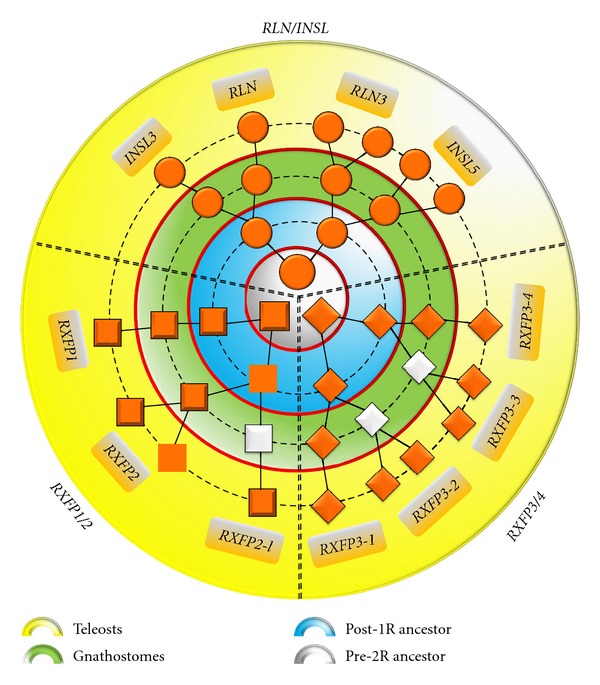Figure 1.

The role of Whole Genome Duplications (WGD) in the expansion of the RLN/INSL and RXFP genes in vertebrates. The three gene families (one ligand (circles) and two receptor (squares) families) arose as a result of WGDs (1R, 2R, and 3R) from three ancestral genes. RLN/INSL peptides: following 1R, there were two RLN/INSL-like genes, following 2R one of these gave rise to RLN3 and INSL5, and the other to RLN and INSL3. After the teleost fish-specific WGD (3R), the duplicates of rln3 and insl5 were retained bringing the total number of rln/insl genes in teleosts to 6. RXFP3/4 receptors: four RXFP3/4-type receptor genes were generated from a single-ancestral gene during 2R; all four of these genes were retained in teleosts, but in tetrapods, only two receptors, RXFP3 (termed RXFP3-1) and RXFP4 (RXFP3-4), were retained. After 3R, the duplicates of rxfp3-2 and rxfp3-3 were retained. RXFP1/2 receptors: most vertebrates have only a single copy of RXFP1 and RXFP2, a few (opossum, frog, reptiles, and zebrafish) have RXFP2-like. Layers coloured in four distinct colors indicate ancestral stages (legend below); WGDs are depicted as red lines surrounding these ancestral stages. White shapes indicate genes lost in most (RXFP2-l, RXFP3-3) or all (RXFP3-2) tetrapod lineages. RXFP2-l= RXFP2-like. Based on Yegorov and Good [2].
